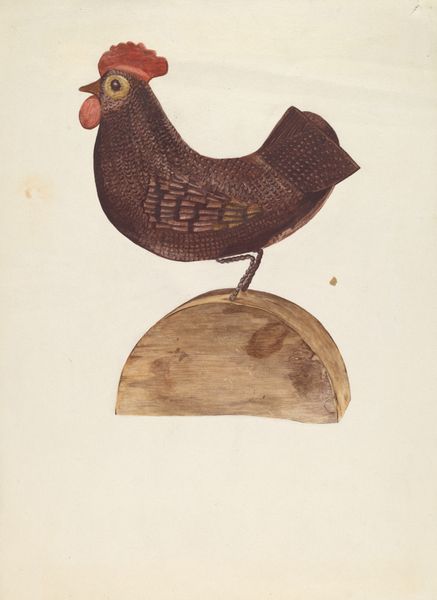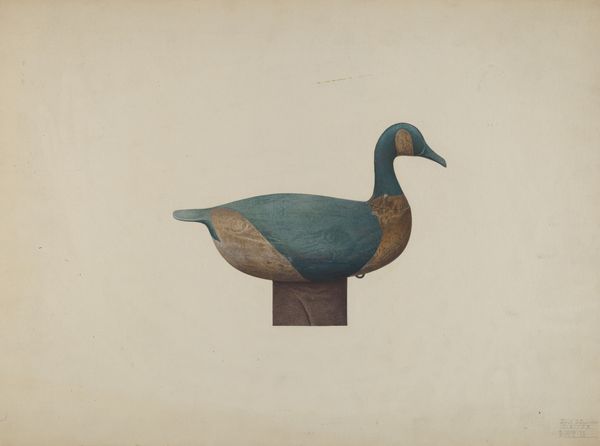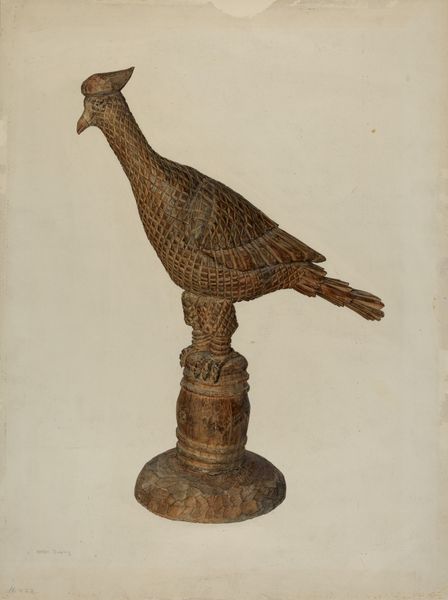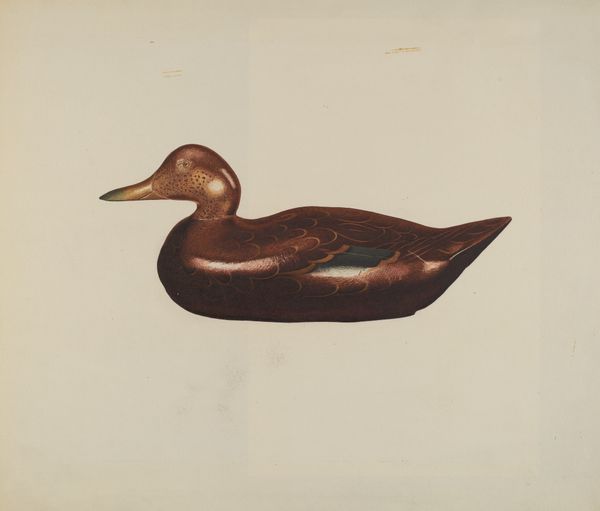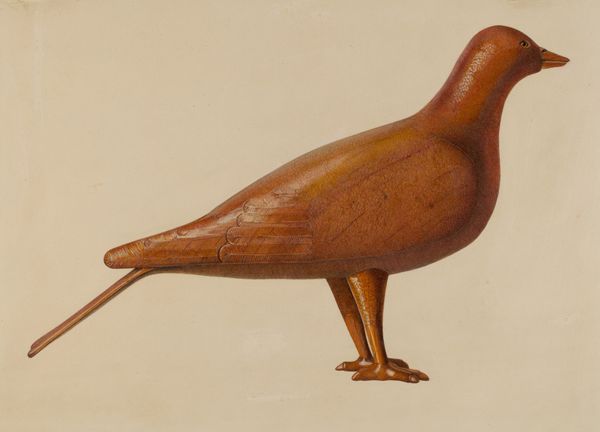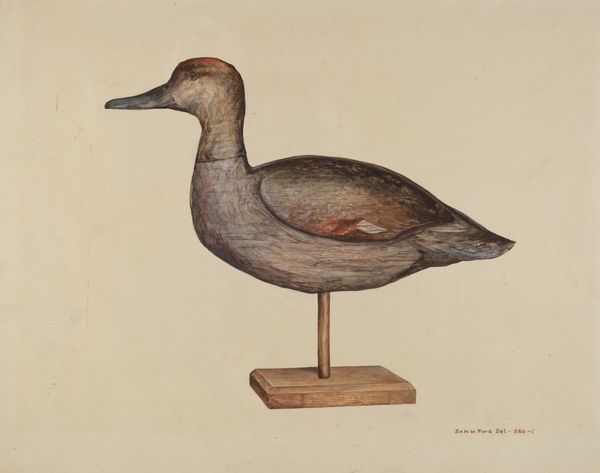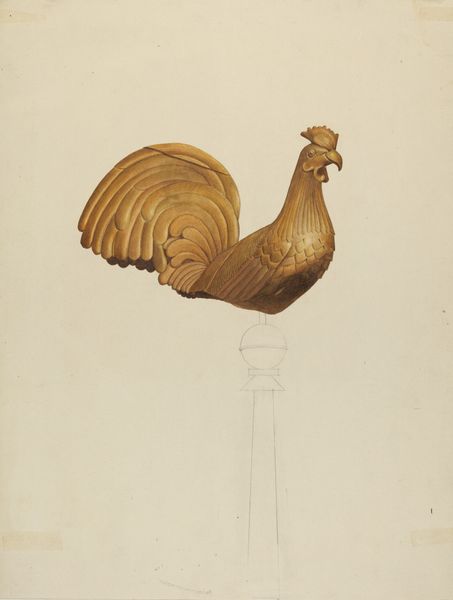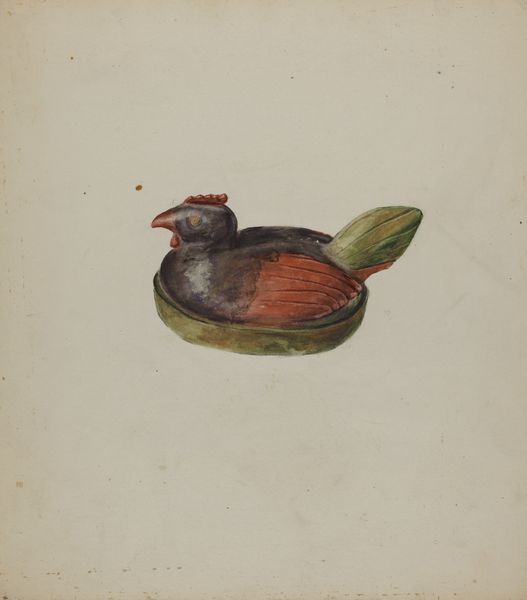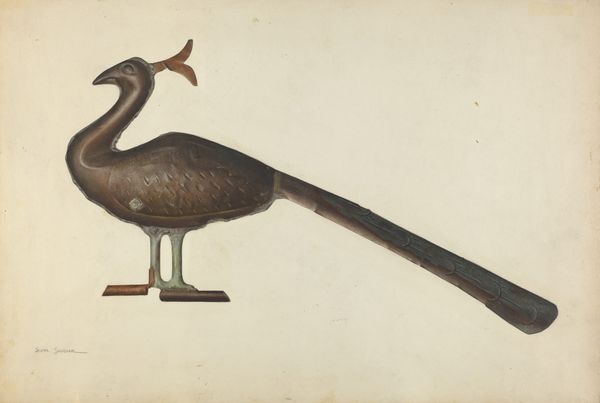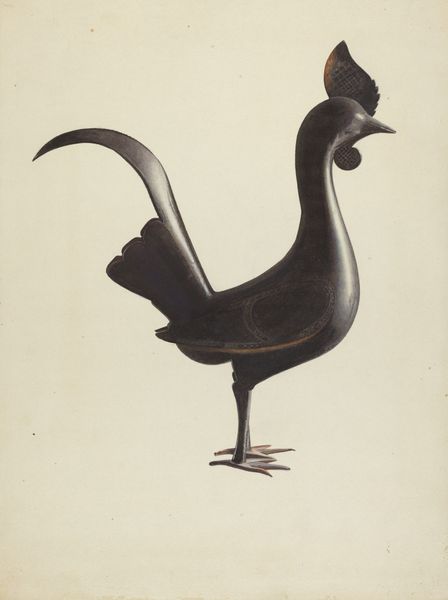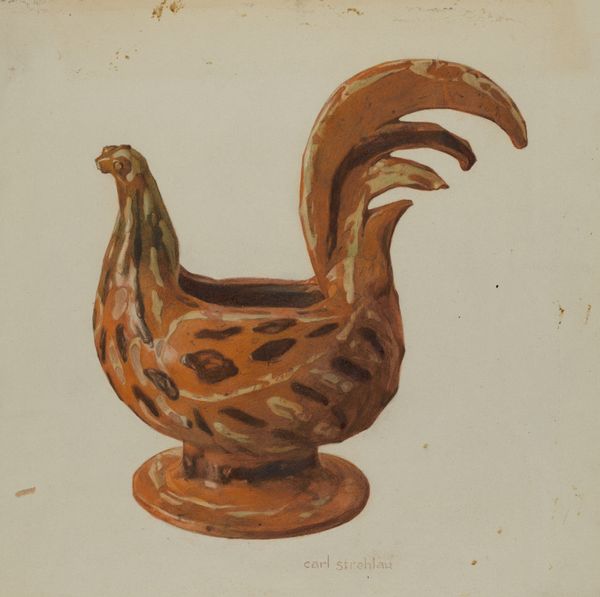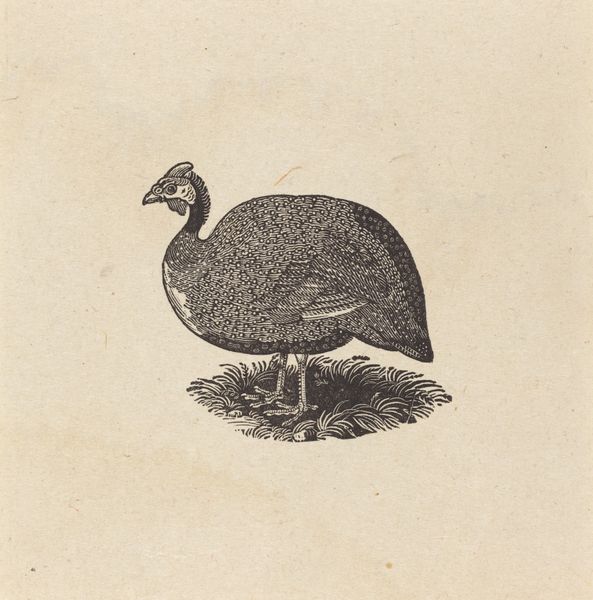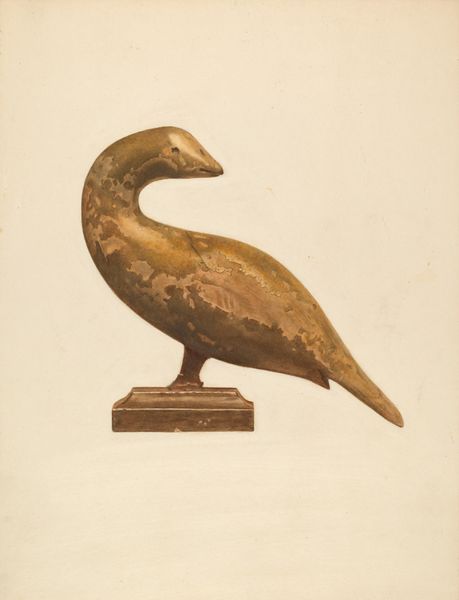
drawing, watercolor
#
drawing
#
caricature
#
watercolor
#
folk-art
#
watercolour illustration
Dimensions: overall: 22.8 x 29.3 cm (9 x 11 9/16 in.) Original IAD Object: 4 1/2" long; 4" high
Copyright: National Gallery of Art: CC0 1.0
Editor: Here we have Charles Garjian’s “Pa. German Toy Bird,” a watercolor drawing dating from the late 1930s to early 1940s. It feels almost… nostalgic, like a memory of a simpler time. What strikes you about this piece? Curator: What immediately comes to mind is the historical context of folk art traditions, especially within the Pennsylvania German community. Consider the timing – this was produced during the Depression era. Does the image of a handcrafted toy bird represent a yearning for simpler, pre-industrial values, a rejection of mass production and a return to community-based craftsmanship? Editor: That’s a great point! It almost feels like a political statement, disguised as something quaint. The vibrant colours used to decorate the bird also make it feel deliberately un-industrial. Curator: Exactly! The artist is choosing to represent a very specific object, a Pa. German toy. Why that object? What are they saying about cultural preservation and the value of regional traditions during a time of significant social and economic upheaval? It also feels like the object has been curated almost like a display. Editor: That’s a whole new layer to it that I hadn’t considered! It makes me wonder, was Garjian part of that community or an outsider looking in? Curator: That's a key question to research. If Garjian was an outsider, his rendering could be interpreted as an appropriation or idealization. If he was an insider, it might signify a deeply personal connection and commitment to preserving his cultural heritage. Both questions would require more research, of course. Editor: Wow, I'm definitely seeing this drawing in a completely new light. I was too focused on its aesthetic appeal initially. Curator: It's a reminder that even seemingly simple artworks can hold complex layers of social and historical meaning. We must always remember that art has always been embedded in its cultural background, a voice in an endless social conversation.
Comments
No comments
Be the first to comment and join the conversation on the ultimate creative platform.
